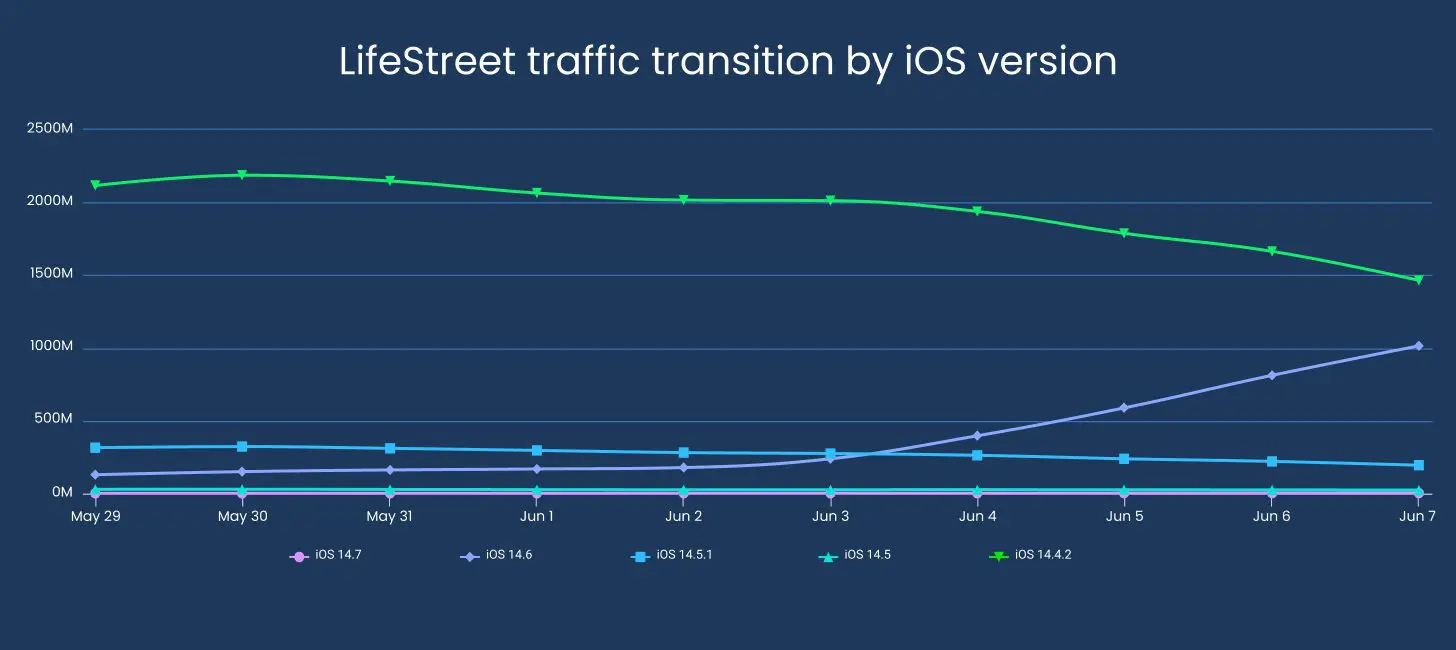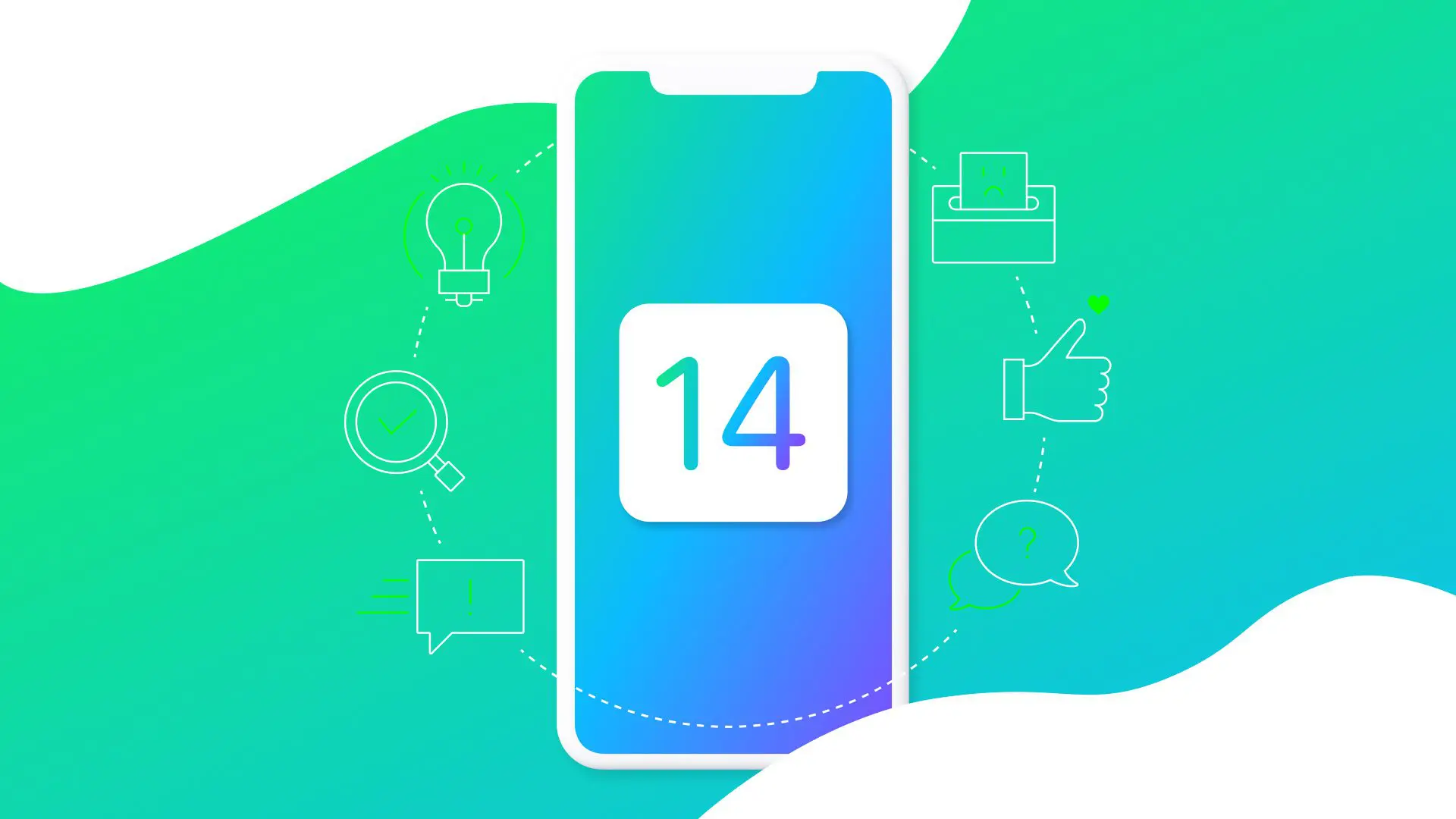So long, device IP. It was nice knowing you.
A couple of weeks ago Apple released iOS 14.6 and with it another change geared at protecting user privacy. Apple is no longer sharing with ad networks and DSPs the device IP address in the SKAN postback. Instead, postbacks are rerouted through an Apple proxy server before being forwarded.
This latest round of changes coincided with LifeStreet’s final week of iOS 14 Office Hours. And as expected, there were questions about how the absence of the device IP and new postback flow would impact DSPs and measurement.
If you’d like to get caught up on our other FAQs, Office Hours Recap 1 and Office Hours Recap 2 are available on the LifeStreet blog.
LifeStreet calculates the ATT (App Tracking Transparency) opt-in rate by looking at the total number of bid requests that show authorized users, divided by the total number of bid requests from authorized users plus users who opted-out of the ATT prompt. As of June 8, 2021 we are seeing:
- iOS 14.6 device adoption at 45%
- ATT opt-in rates are at 20%

What’s the significance of not having access to device IP?
Because the IP address is based on geolocation, an ancillary result of not receiving the device IP in the postback is that ad networks and DSPs also lose geolocation data, a critical piece of information for targeting. Instead, a generic Apple IP is used. This makes it challenging to accurately know which country a user is in unless campaign IDs are assigned countries and regions.
Even though ad networks and DSPs don’t receive device IP with the SKAN postback, Apple is sharing a language-geo combination in the postback header that can be used to attribute geo. For example, we’d receive english-great britain or english-us and can assume with some degree of certainty that the user is located in Great Britain or the United States.
You win some, you lose some. While we lost the device IP, the user agent now includes phone model, OS version, and CPU in the postback. This means Apple campaign IDs do not need to be used to collect information about a user’s device and can instead be used to track and target other parameters.
As is often the case with Apple’s policy changes, not enough has been disclosed at this time to know with certainty the full impact of not having device IP or the value of an enhanced user agent.
How does the absence of the device IP in the postback impact attribution?
Without the device IP being shared in the postback, DSPs and ad networks can no longer tie this probabilistic identifier to a successful app install. But for MMPs, not much changes. They will still have access to the device IP and continue to measure attribution in 14.6 pretty much as they did in previous iOS versions.
How can the privacy threshold be hit in order to receive app source and conversion ID?
Hitting the privacy threshold for source app and conversion value is another measurement limitation. Apple states a “privacy threshold” must be met in order for conversion value and/or the source app ID to be shared in the postback but it does not define what that threshold is or what needs to be done to satisfy that requirement. Without the conversion value and/or source app ID, an advertiser won’t know much more about a conversion other than it happened.
Our strategy while the adoption rate was slow was to increase SKAN postback volume and data. We did this by:
- Launching a campaign on iOS 14 through iOS 14.4.2 where standard postbacks with conversion attribution are received from the MMP.
- Optimizing the iOS 14 through iOS 14.4.2 campaign as we always had.
- Simultaneously turning on and sending SKAN postbacks for non-iOS 14.5 campaigns to start collecting SKAN postback data.
By using MMP install postbacks to evaluate downstream performance, we were able to take any performance based optimizations made to any pre-iOS 14.5 campaigns and apply them to the iOS 14.5 campaign for improved chances of success.
But in the past few weeks we’ve seen the percentage of SKAN postbacks that do not contain a conversion value (and instead return “null”) shrink. We think this is because Apple has lowered their privacy threshold and we are now adjusting our strategy for each partner, taking into account the different MMP attribution settings.
